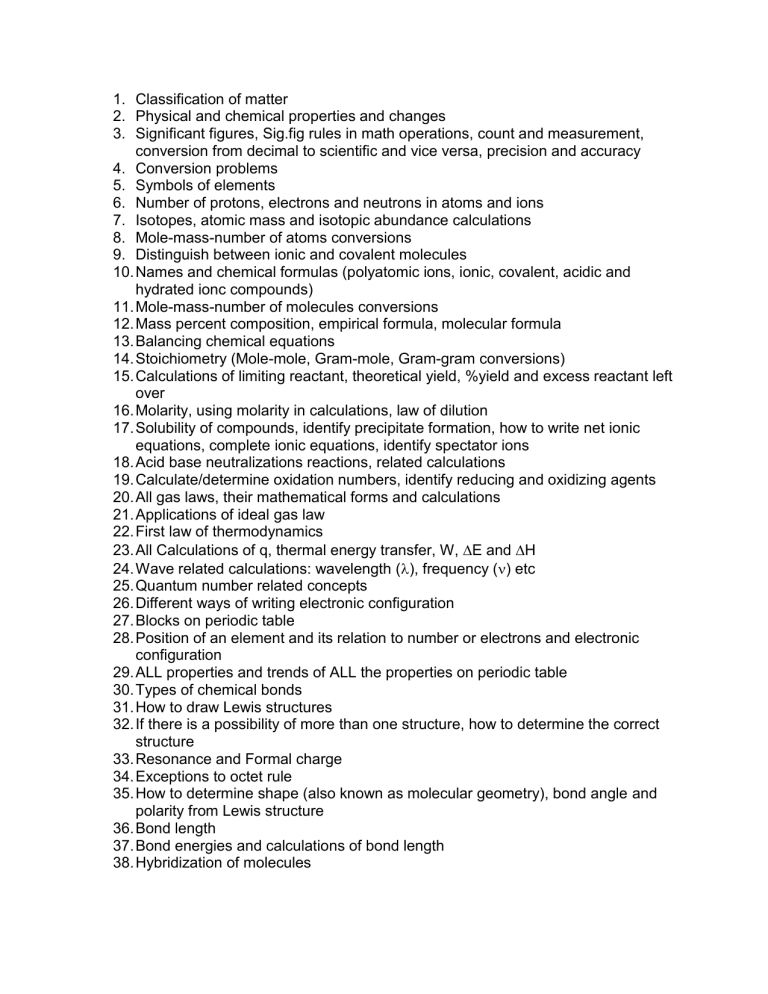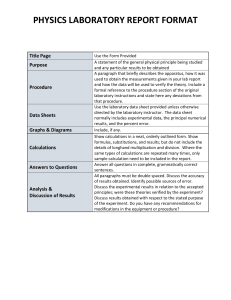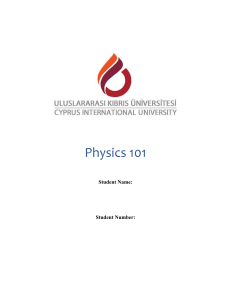
1. Classification of matter 2. Physical and chemical properties and changes 3. Significant figures, Sig.fig rules in math operations, count and measurement, conversion from decimal to scientific and vice versa, precision and accuracy 4. Conversion problems 5. Symbols of elements 6. Number of protons, electrons and neutrons in atoms and ions 7. Isotopes, atomic mass and isotopic abundance calculations 8. Mole-mass-number of atoms conversions 9. Distinguish between ionic and covalent molecules 10. Names and chemical formulas (polyatomic ions, ionic, covalent, acidic and hydrated ionc compounds) 11. Mole-mass-number of molecules conversions 12. Mass percent composition, empirical formula, molecular formula 13. Balancing chemical equations 14. Stoichiometry (Mole-mole, Gram-mole, Gram-gram conversions) 15. Calculations of limiting reactant, theoretical yield, %yield and excess reactant left over 16. Molarity, using molarity in calculations, law of dilution 17. Solubility of compounds, identify precipitate formation, how to write net ionic equations, complete ionic equations, identify spectator ions 18. Acid base neutralizations reactions, related calculations 19. Calculate/determine oxidation numbers, identify reducing and oxidizing agents 20. All gas laws, their mathematical forms and calculations 21. Applications of ideal gas law 22. First law of thermodynamics 23. All Calculations of q, thermal energy transfer, W, E and H 24. Wave related calculations: wavelength (), frequency () etc 25. Quantum number related concepts 26. Different ways of writing electronic configuration 27. Blocks on periodic table 28. Position of an element and its relation to number or electrons and electronic configuration 29. ALL properties and trends of ALL the properties on periodic table 30. Types of chemical bonds 31. How to draw Lewis structures 32. If there is a possibility of more than one structure, how to determine the correct structure 33. Resonance and Formal charge 34. Exceptions to octet rule 35. How to determine shape (also known as molecular geometry), bond angle and polarity from Lewis structure 36. Bond length 37. Bond energies and calculations of bond length 38. Hybridization of molecules



